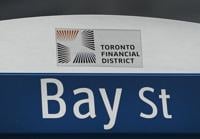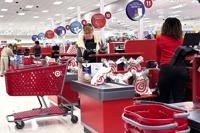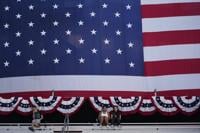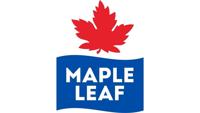Canada's competition watchdog released its much awaited study into the country's retail grocery market on Tuesday, painting a picture of a highly concentrated industry dominated by few players.
Making an effort to detail its findings in "plain language," the Competition Bureau highlighted the need to communicate clearly on the issue to promote transparency.
The bureau said most şĂÉ«tvs buy groceries in stores owned by giants Loblaw, Sobeys, and Metro, with rising prices signalling a need for more competition in the sector.
Here are five key take-aways from the report.
Harmonized unit pricing requirements as a potential solution
Among the four main recommendations contained in the report, the Competition Bureau called on provincial and territorial governments to consider introducing accessible and harmonized unit pricing requirements.
That would force grocers to display the price of a product based on a standard package size, alongside the total price. For instance, for two differently sized containers of apple juice, a store would have to disclose the total price, along with the price per 100 millilitres, to provide an apples-to-apples comparison.
Noting the difficulty consumers face when trying to compare prices on similar items between different stores, the bureau said the requirement would give shoppers more complete information about their options: "It serves as a quick and easy way to know if a consumer is getting the best deal — without resorting to a calculator or mental math."
Many grocery stores already display unit pricing, but Quebec is the only province or territory that requires it by law. The bureau said governments should consider whether the requirement is appropriate for all grocers, or just large chains due to the potential burden on smaller independents.
Not every company played ball
During its study, the bureau said the level of co-operation it received from Canada's grocery giants "varied significantly and was not fulsome." In many instances, it said it was unable to obtain complete and precise financial data, despite repeated requests.
Unlike when conducting law enforcement investigations, the bureau could not compel the release of information for its study, instead relying on information that was publicly available or provided voluntarily. It said it consulted with a variety of grocers, both in Canada and internationally, many of which "were happy to speak with us, and we appreciate their candour and assistance."
"Others were more reluctant to share information with the Bureau," it stated. "This did limit our ability to fully answer some questions that are top of mind for şĂÉ«tvs … Nevertheless, the absence of this information did not prevent us from identifying important ways in which grocery competition could be increased."
The bureau said its inability to compel information highlights the need for formal information-gathering powers and it continues to advocate for legislative changes to improve the Competition Act in that area.
A consolidated sector and the bureau's hands tied
The report pointed out that even if you don’t shop at a store called Loblaws, Sobeys, or Metro, you may be shopping at another store that they own or are affiliated with, as all three companies have over 1,000 stores each, including franchised locations. Along with Costco and Walmart, that means just five large grocery chains operate in Canada.
But back when the Competition Act was introduced in 1986, there were at least eight large grocery chains across Canada, each owned by a different company. Five of the large chains that were around 37 years ago were bought by their competitors, including Steinberg’s stores being sold to A&P, Metro, Provigo and IGA, Provigo’s stores to Loblaws, IGA’s stores to Sobeys and Loblaws, A&P’s stores to Metro, and Safeway’s stores to Sobeys.
The bureau said it heard from some who feel Canada’s laws don't do enough to stop deals that are bad for competition. But it said that when a big grocer buys up a small number of stores in urban areas, it is often difficult to stop them due to the challenge of proving it will lead to significant price increases.
"Despite concerns often being raised when a big company buys a smaller competitor, the reality is that consumers typically only lose one of many alternative stores," it said.
"The law in Canada typically will not allow the Bureau to intervene in these deals, as they are generally seen as unlikely to have a significant impact on prices and other dimensions of competition."
The rise of online shopping
With more şĂÉ«tvs purchasing their groceries online, grocery giants have invested significantly into their online business models, which the bureau said has been a boon for consumer choice.
But it cautioned that online shopping may have simply created a new way to access existing options, rather than increase competition. It said online platforms can provide a new way to source products from a pre-existing retailer.
Meanwhile, delivery services often act more like grocery store partners than independent competitors, meaning they can’t charge lower prices than the store they buy from without taking a loss.
To leverage the rise in online shopping habits and meaningfully bolster competition, the bureau said Canada will need to see truly independent online grocers emerge.
"Grocery business models are adapting to the online world and, with that, comes the opportunity for new competitive alternatives to emerge," it said.
Where are the international grocers?
The bureau also studied why few international grocers, aside from Walmart and Costco, have entered the şĂÉ«tv market. It said it heard from companies not currently in Canada that there are a number of reasons why they haven't sought to bring their business here, including the fact that Canada’s existing grocery giants would be "daunting competitors."
Others cited high-cost factors such as şĂÉ«tv grocers' vast selection of ethnic products, which would be challenging to replicate, and laws requiring bilingual labels on packaged foods.
Some noted that while Costco and Walmart found success in Canada, other international companies such as Target did not, prompting worries of a similar experience.
To successfully enter Canada, some international grocers noted that it would be crucial to establish distribution networks, relationships with şĂÉ«tv suppliers and brand recognition. For those reasons, many feel it's easier to continue focusing on expansion in their current regions instead.
This report by şĂÉ«tvwas first published June 27, 2023.
Companies in this story: (TSX:L, TSX:EMP.A, TSX:MRU)








































